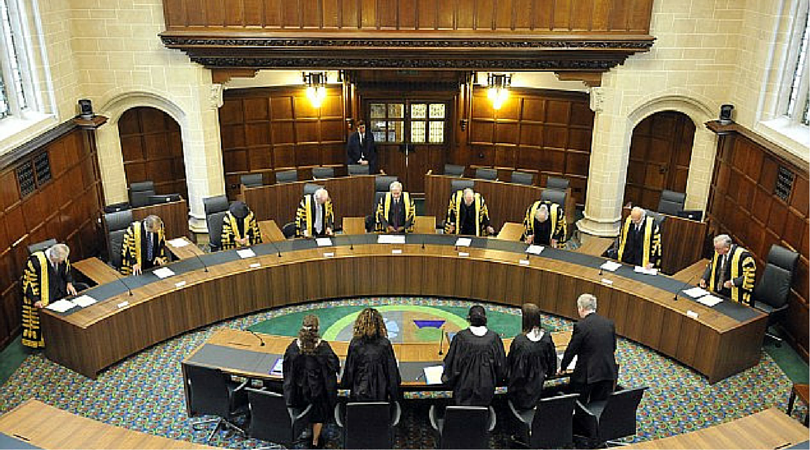The decision of the UK Supreme Court in Telereal Trillium (Respondent) v Hewitt (VO) (Appellant) (2019) UKSC 23 will be of interest to all valuers involved with non-domestic rating valuations. It concerns the valuation of Mexford House, a large 1970’s office building in the North Shore area of Blackpool in the 2010 rating list. Mexford House had been occupied as government offices, and was still in use at 1 April 2008 (the valuation date for the 2010 rating list) but by 1 April 2010 had become vacant, although other similar properties remained occupied. The ratepayer appealed against the original rateable value of £490,000. The Valuation Tribunal for England accepted the evidence of the ratepayer that there was no demand for the property, and reduced the assessment to a nominal figure of RV £1.
The Valuation Officer appealed against that determination to the Upper Tribunal (Lands Chamber) and, during the course the course of the hearing before the Upper Tribunal, the parties agreed a Joint Position Paper (JPP) that reduced the question to one of law. The JPP set out agreement that, at the relevant valuation date, nobody in the real world would have been prepared to occupy the appeal property and pay a positive rent. The JPP agreed that the rating hypothesis requires a hypothetical tenant to be assumed, but the question was whether that hypothesis requires the value to be determined by reference to the “general demand”; as shown by the occupation of other similar properties. The JPP set out that, if the answer that question was “yes”, then the correct rateable value was £370,000, and, if it was “no”, then the correct answer was £1.
The Upper Tribunal found that the answer to the JPP question was “yes” and determined a value of £370,000. The ratepayer appealed to the Court of Appeal, which found that, in the absence of any demand for the property, the answer to the JPP question was “no” and the correct value was £1. The Valuation Officer appealed to the Supreme Court.
The lead judgement of Lord Carnwath found that there is an important distinction between a property which is vacant simply because of a surplus of supply over demand, and one which is vacant because it has reached the end of it economic life. The true test is whether the occupation is of value. Whether a building is occupied or vacant is not relevant, nor is the fact that an actual tenant has, or has not been identified. The rating hypothesis assumes the existence of a hypothetical tenant, willing to enter into negotiations for a tenancy and, if there is no evidence to the contrary, the rent agreed for that tenancy can be assessed by reference to “general demand”, evidenced by the occupation of other similar properties. Lord Reed and Lord Lloyd-Jones agreed with this judgment and the Supreme Court allowed the Valuation Officer’s appeal and restored the valuation of the Upper Tribunal at rateable value £370,000.
Lord Briggs, and Lady Black dissented and came to the opposite conclusion. They agreed with Lord Carnwath that the Court could not go behind the JPP but, in the real world, the fact that comparable properties continued to be occupied would normally result in the view that one of those tenants might be prepared to relocate to the vacant property, at a reduced rent, but at more than a nominal value. It would be rare to be able to show that there was no demand at all for a property, where other similar properties in the locality are let at substantial rents. But, if that is what the evidence shows or, as in this case, it is what the parties have agreed, then the rating hypothesis does not require a departure from reality, simply because the subject property is still capable of being occupied.
The Supreme Court judgment restores the Upper Tribunal’s conclusion on valuation, by a narrow majority. The judgments of both sets of justices (those who allowed the appeal and those who would have dismissed it) make clear that the Court could not look behind the JPP, but both judgments appear to imply that they would rather not have been constrained by the JPP. Lord Carnwath refers to issues “left unresolved” by the JPP, and Lord Briggs to it requiring the Upper Tribunal to make “a rather unreal choice”.
The impression is clearly left that both sets of Supreme Court justices might have preferred a position whereby the existence of a “saturated market”, that is to say more properties than tenants that could be identified for them, should be reflected in a reduced value, rather than a stark choice between full value, and a nominal figure. As Lord Briggs said in his dissenting judgment: “Demand for a letting of a particular property is not normally a binary, yes or no, question. The real question is, demand at what rent?”
The ratepayer will, no doubt be disappointed by the outcome, and ratepayers of other large vacant properties may point to the suggested “unreality” of an outcome whereby a full value is applied to a property for which no tenant can be identified, and the Valuation Office may be relieved that it will not be faced with a flood of proposals seeking nominal values. But, both the majority judgment, and the dissenting one, point to ways in which rating valuations can properly reflect an oversupply of property relative to demand for properties of that type. If this decision does no more than remind valuers of that, then it will serve an important purpose.

